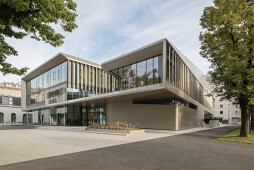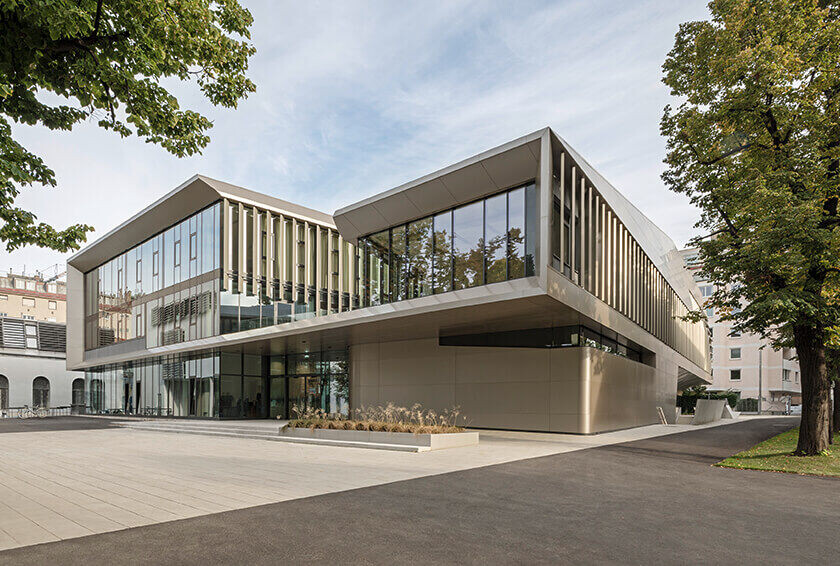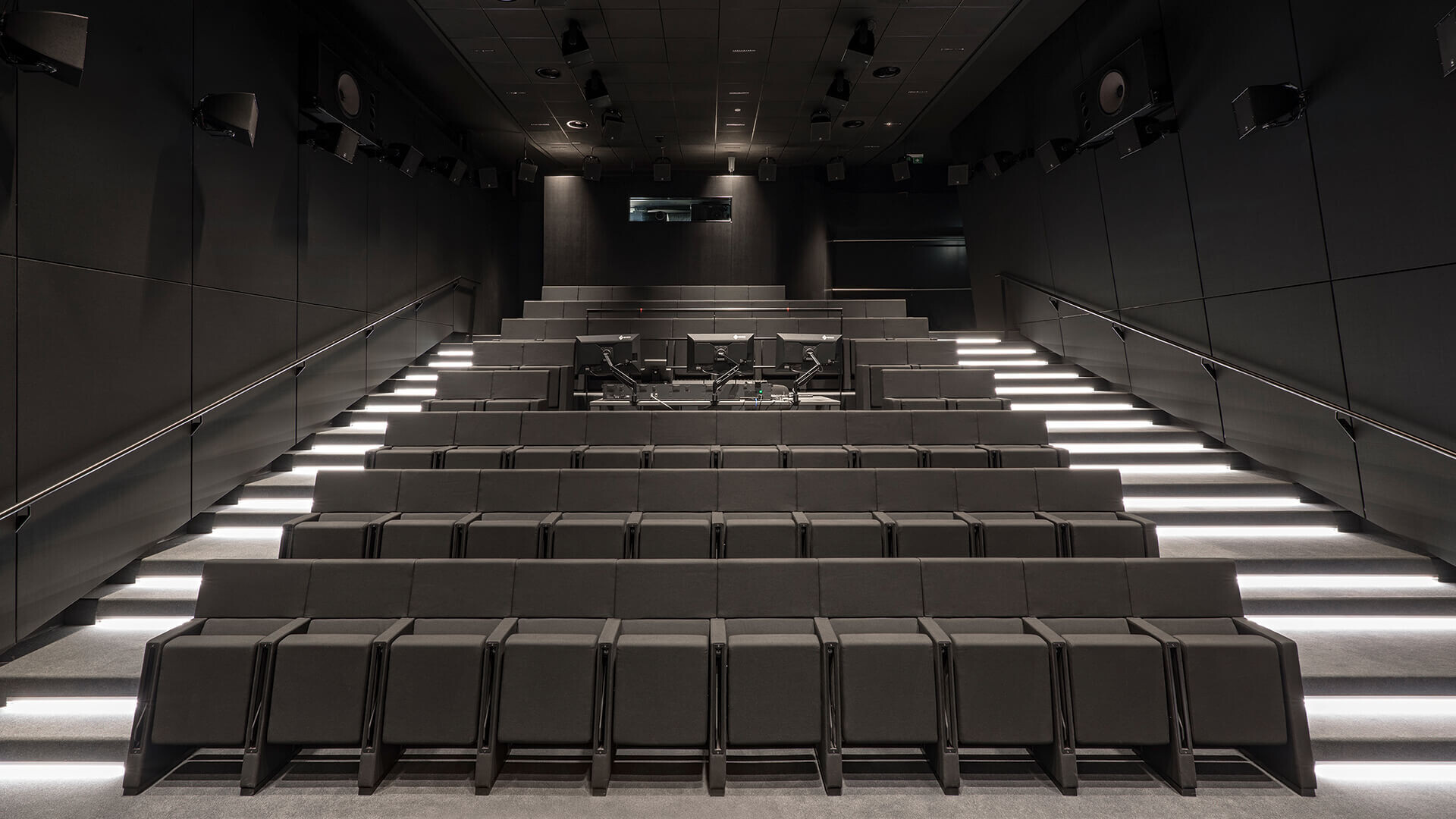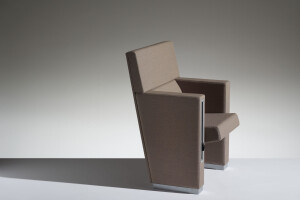Urban planning:
The new building for the Future Art Lab will complete the development of this special campus, which is reminiscent of Anglo-American models and is unique for Vienna. On account of this, and due also to it location at a prominent position, this building has a special importance, which makes it possible to especially accentuate the canon of the buildings on the campus at this point.
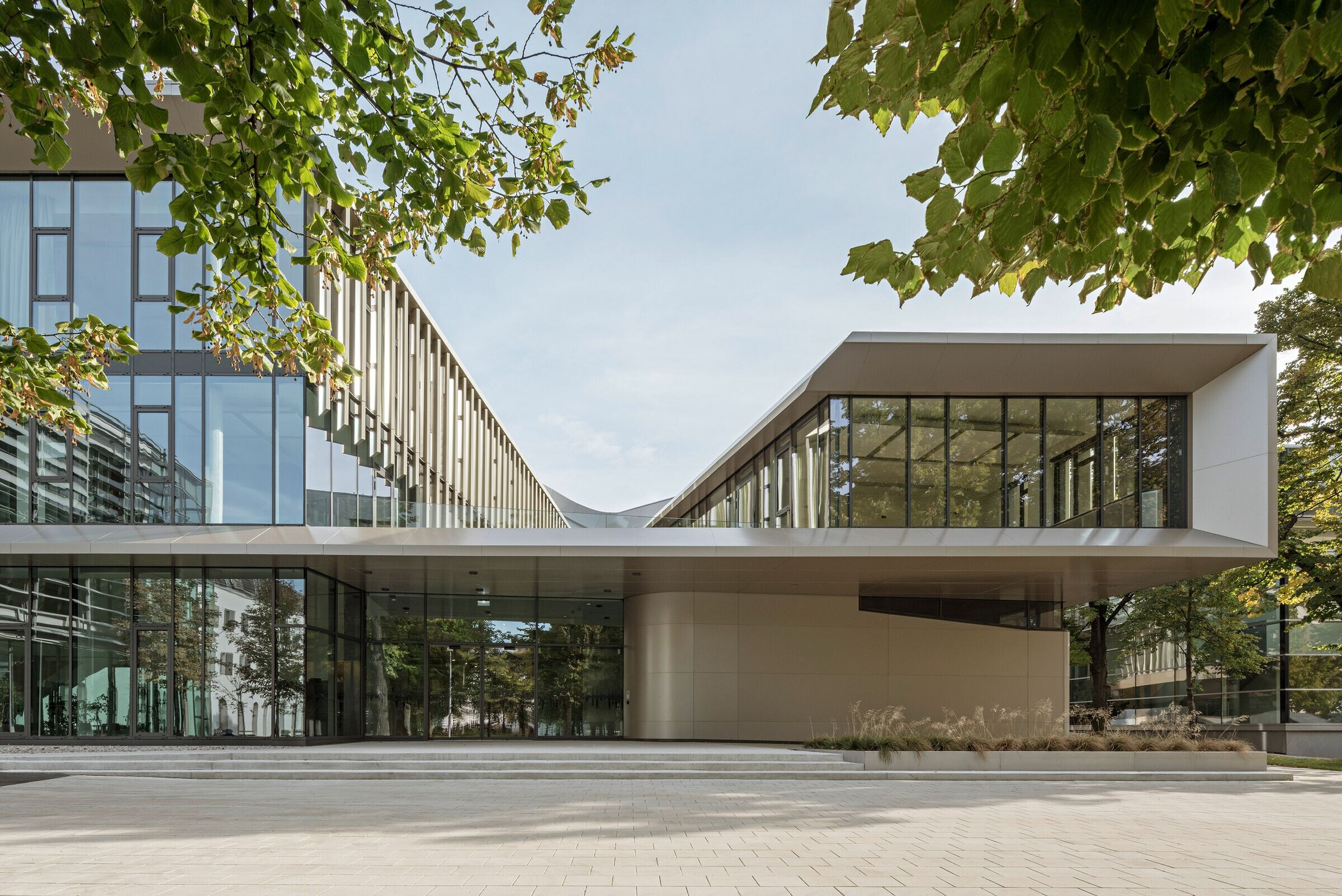
On the other hand to exert a particular dominance here would be inappropriate. A moderate height, integration with the neighbouring buildings in terms of volume, and spatial and functional references to the central open area, the “campus” in the literal sense of the term, appeared important. The building is seen as a pavilion which makes a gesture of opening towards the middle of the university and which can also respond to urban references.

The result is a free-standing, embedded building which can very much be understood as an apparatus, an appliance for playing, composing and experimenting with and on film and music.
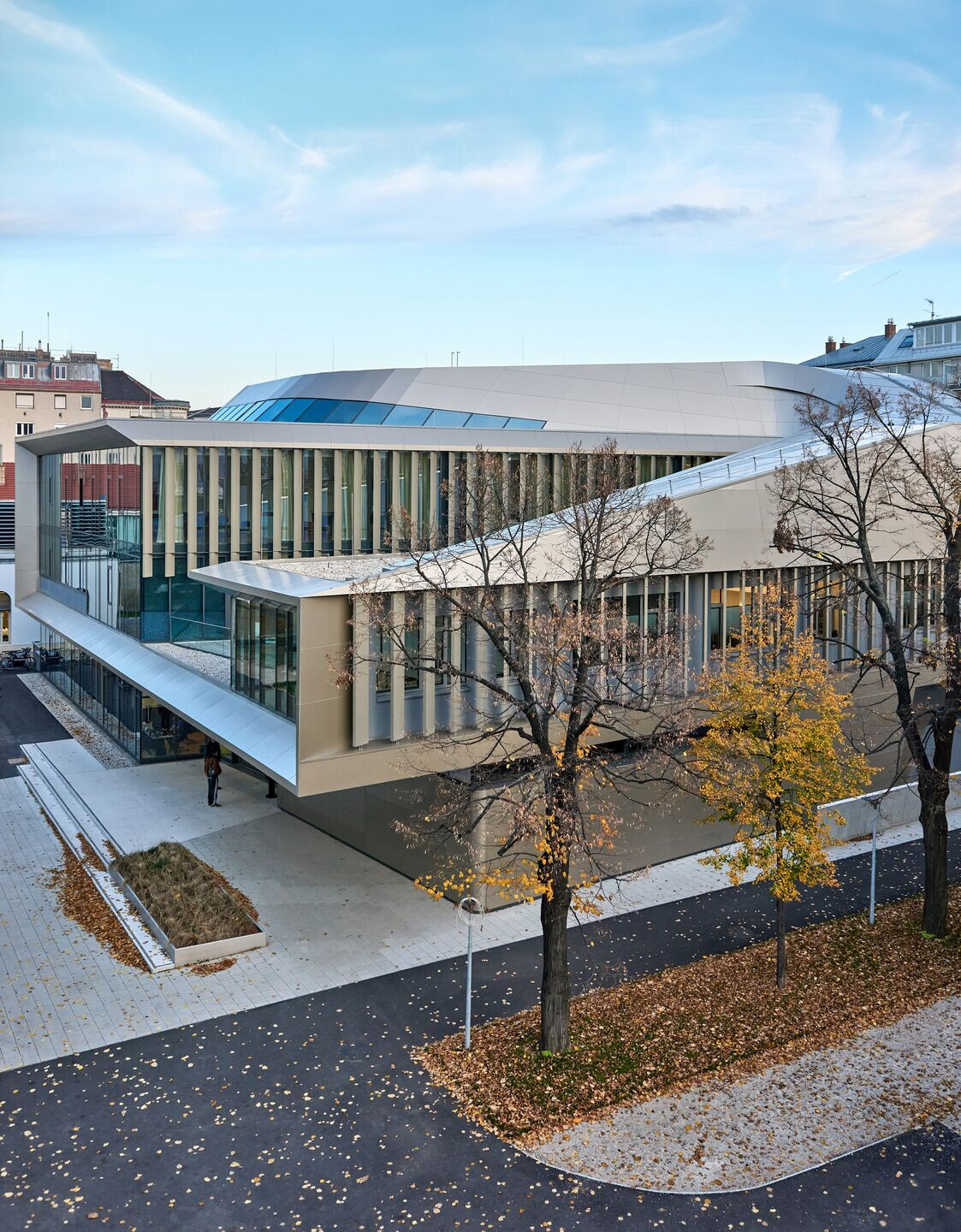
Function:
The internal organisation is based on the requirements in terms of function and building acoustics, and the aim is to give each institute the greatest degree of compactness combined with maximum exposure to daylight.For reasons of acoustics the Institute for Electro-acoustic Music and Composition with the large halls (the Klangtheater (sound theatre), and the recording hall) which form its nucleus is placed at basement level, along with a generously sized foyer zone. Through a sunken courtyard its teaching spaces receive sufficient natural east light. The institute’s administration rooms are also east-facing and are located on the ground floor as is the main foyer.
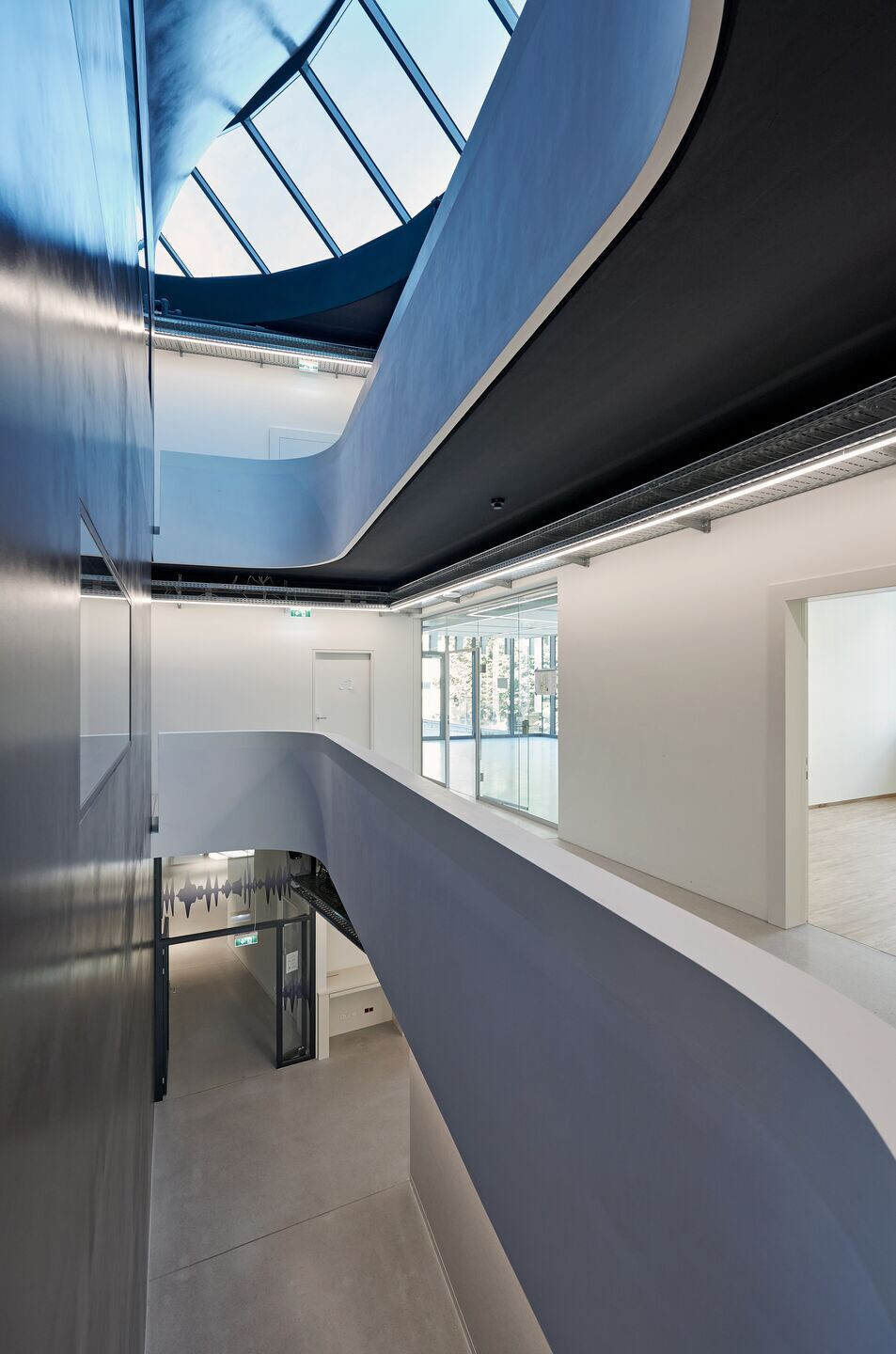
In terms of floor area the Film Academy is the largest institute with the greatest number of rooms that must be lit naturally. It takes up the entire 1st floor, which, in accordance with the building regulations, is also the largest in area. To generate more facade area for daylight a wing is folded inwards, creating a large terrace as a side effect. The Art House cinema is placed so that the public can access it directly at ground floor level. The lower level of the cinema is directly connected with an intermediate level inserted in the void of the basement. At this point a direct pedestrian connection to the neighbouring Building G is possible
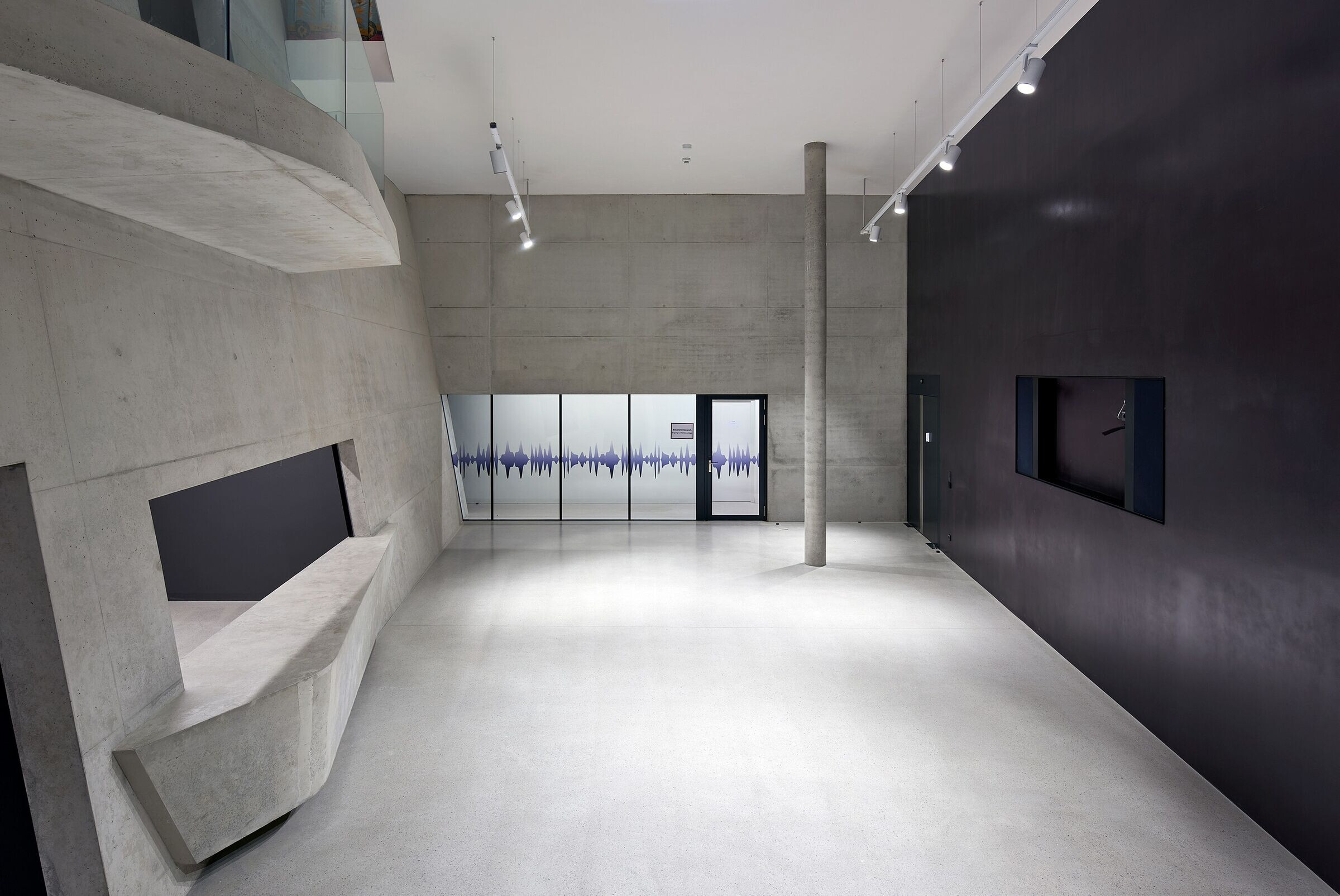
The recessed 2nd floor, the roof level, is reserved for the Institute for Keyboard Instruments, which in terms of floor area is the smallest but which has a relatively high proportion of areas that must receive daylight. It, too, is grouped around its nucleus, the concert hall. In terms of ceiling height the concert hall exploits the roof volume allowed by the building regulations, and it is naturally lit.
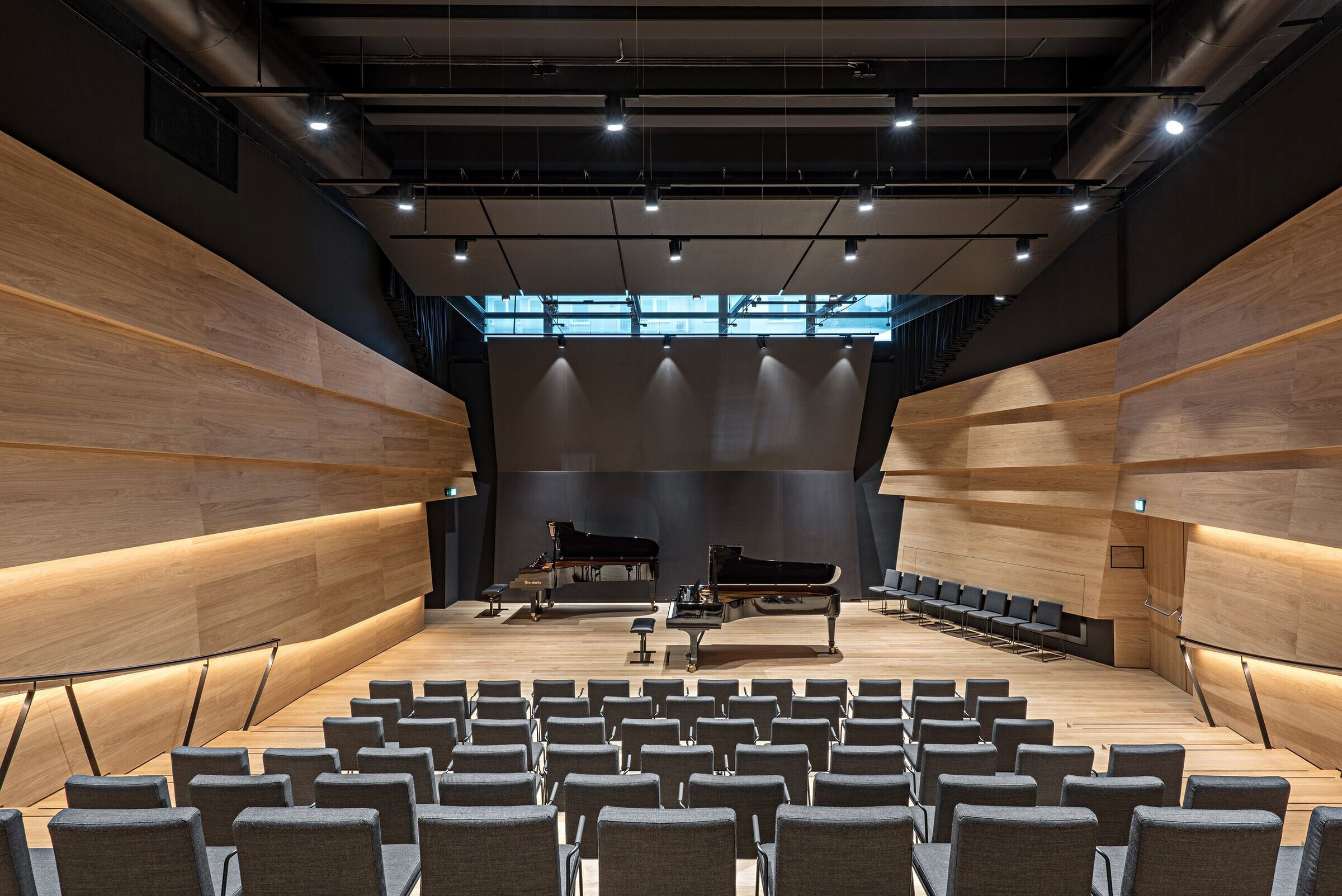
Material Used :
1. SCHÜCO ALUKÖNIGSTAHL GmbH (alu steel profiles, metal facade | windows | doors)
2. Bauunternehmung GRANIT Gesellschaft m.b.H. (contractor)
3. Fuchs Glas Technik GmbH St. Valentin (glass walls)
4. Kone AG Vienna (elevators)
5. Braun Lockenhaus GmbH (furnishing)
6. Neudörfler Office Systems GmbH (furnishing)
7. Montana Furniture Austria (furnishing)
8. Lamm s.r.l. San Secondo Parmense (seating cinema)
9. LEHA Sonnenschutz & Vorhangschienen nach Maß (sun protection)
10. kvadrat Vienna (textiles)


